As crazy as it may sound, midsummer is the perfect time to set a trap for a fall big-buck encounter by making mock scrapes. Most deer hunters associated scrapes with pre-rut hunting, but in my experience, you don’t have to wait until bucks start pawing the dirt in earnest weeks into hunting season to reap the benefits of these whitetail calling cards. In fact, you can start leveraging the almost magnetic draw of scrapes right now, and the pay-off can come early in the bow season, as I’ve found several years in a row by using them to take great public land bucks in Michigan before the typical scrape-hunting period begins.
Using mock scrapes to habituate bucks to visiting a location of my choosing has been a difference-maker for me and can be a great tool for any whitetail hunter willing to put in some hot summer miles on their boots. Let's look at the details of creating magnetic summer mock scrapes.
Why Make Mock Scrapes in Summer?
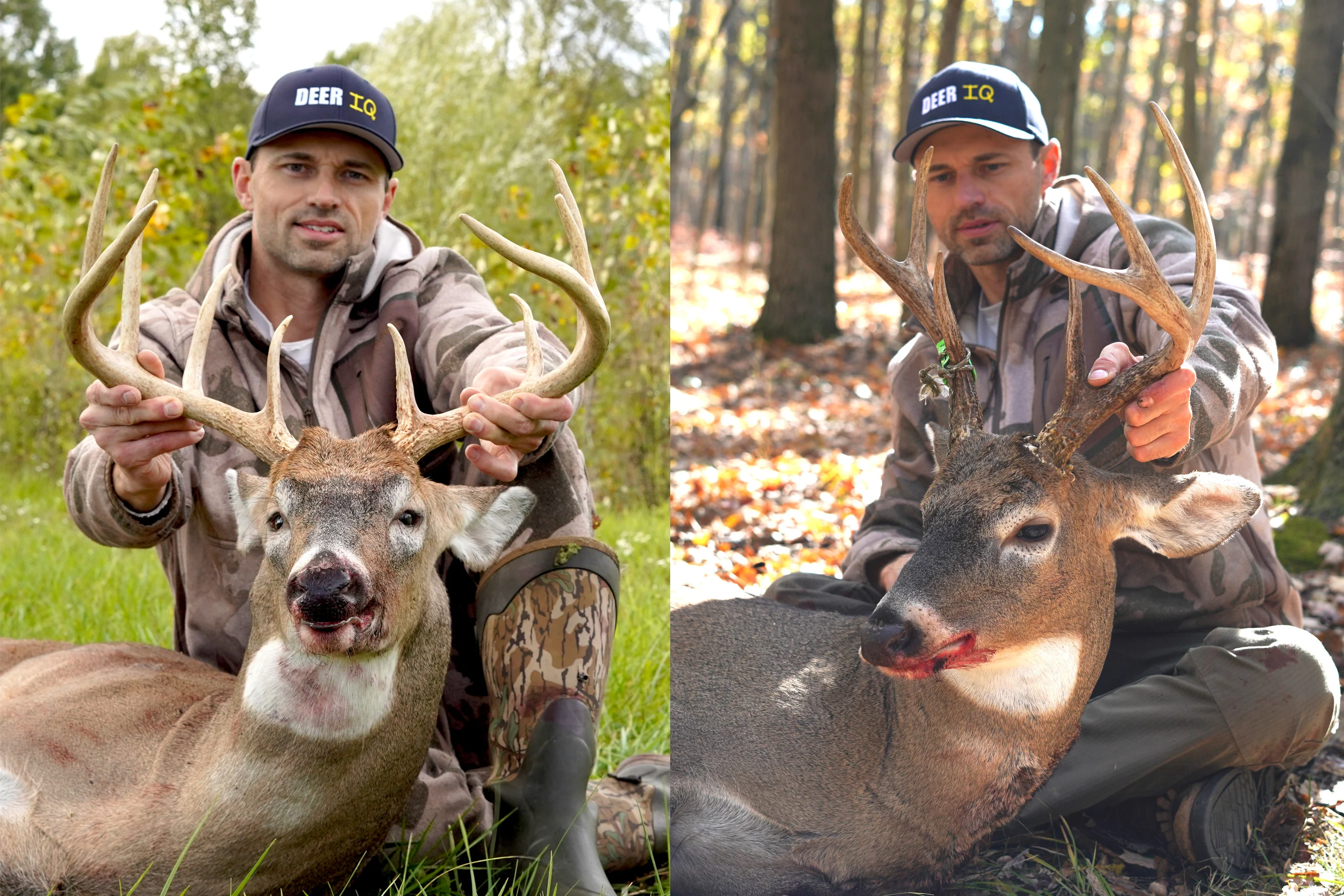
There are many reasons to begin mock scrapes well before hunting season begins. Here are five that may convince you to get them started right now.
They ingrain a habit. Conditioning a behavior takes time and repetition. If you want a buck to get in the habit of walking by your stand, why not start as early as possible? By making mocks in summer, you’re increasing his repetitions and ingraining a behavior at a time when a buck’s guard is down, increasing the likelihood he’ll feel safe there and continue to visit your scrapes as he cruises during the fall.
They focus your efforts. Summer scrapes help reveal the potential of an area because they are perfect places to take trail camera inventory. Although many bucks will move from their summer haunts come fall, some remain. Data collected with trail cameras over scrapes can help maximize in-season hunting and decision making because you can begin to eliminate areas not holding the caliber of buck you want to shoot, especially early on.
They Indicate Willing Participants: The degree to which a scrape gets “active” early can clue you in to the aggression level of older bucks and how easy they will be to hunt. If I get one or even several mature bucks hitting a summer scrape, that tells me me that they are killable—possibly in the first week of hunting season. By introducing a competing buck with a scrape, you can weed out the non-responsive deer and focus on their aggressive counterparts, which is a sure route to high-odds encounters.
They Put the Ball in Your Court: I’ve found my opportunities at good bucks go way up when I’m controlling the situation. When you strategically create scrapes in locations that allow you to hunt them effectively, you strip some power from smart old deer that tend to only stick their necks out when the deck is completely stacked in their favor. This tips the odds in yours.
They Maximize Scouting: Even if no bucks respond to your mock scrapes, you have at least put out a calling card they may circle back to. Bucks are aware of everything in their home ranges, and even if they don't tear them up initially, they may return weeks or months later. This gives you a place to begin scouting in the lull or pre-rut instead of starting from scratch looking for hot sign.
Where to Put Mock Scrapes
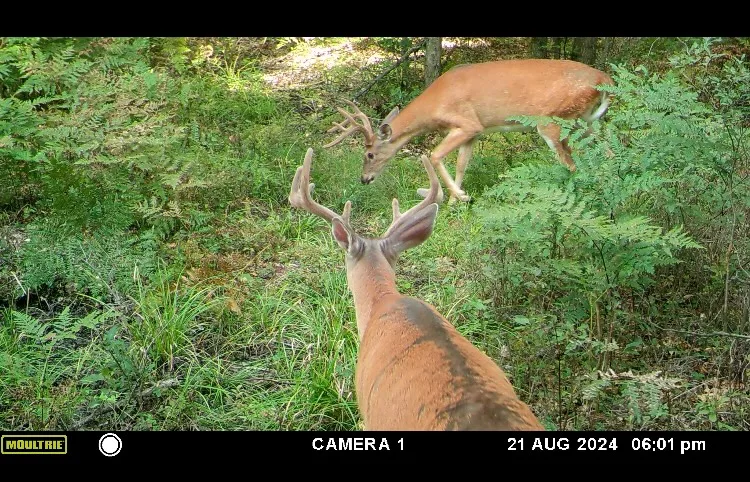
Where you establish scrapes depends on if your goal is taking an inventory of summer bucks or hunting when season hits. Most of my mock scrapes fall into the latter category, but both have merit. For general inventory, pick easy-to-access areas like agricultural field edges or open timber where multiple heavy runways meet. These allow easy midday access to check trail cameras you place over them without intruding into bedding areas. It also ensures larger volumes of deer will find it the entire summer and fall and increases the chance bucks will leave their own scent and return again and again.
Scrapes for made for hunting require a bit more planning. Still look for areas where multiple trails or edges converge, but add the elements of heavy cover with adequate shooting opportunity to the list of considerations. Deer need to feel safe to hit your scrape in daylight, and I’ve found thick cover, within a quick bound of your setup is needed for mature bucks in particular. Also make sure an adequately camouflaged tree stand or blind position is located within easy shooting distance, and that stealthy entry and exit routes are determined before breaking ground. And if you can find a rock-solid location that doesn’t allow bucks to circle downwind of you, that’s a bonus, as wary old bucks will do this if they can before visiting a scrape. It’s quite a bit, but all factors to consider for selecting a hunting scrape location.
An example of this I’ve used on private land is where a dense swale, woods, and uncut corn field meet. Since deer naturally travel these edges, a mock scrape made along edges like these has a great chance to be found and revisited. In this scenario, my entry and exit is along the field edge or open woods away from deer travel, and a blind or stand set at the least intrusive point I can effectively shoot the scrape. In public-land areas, I look for tangles of cover almost impossible to walk through that have small openings within them. Overgrown clearcuts can be great. If you can carefully protrude into and hunt these, it keeps your pressure to a minimum while allowing for the conditions mature bucks need to tend your mock scrape in daylight.
How to Make Effective Mock Scrapes
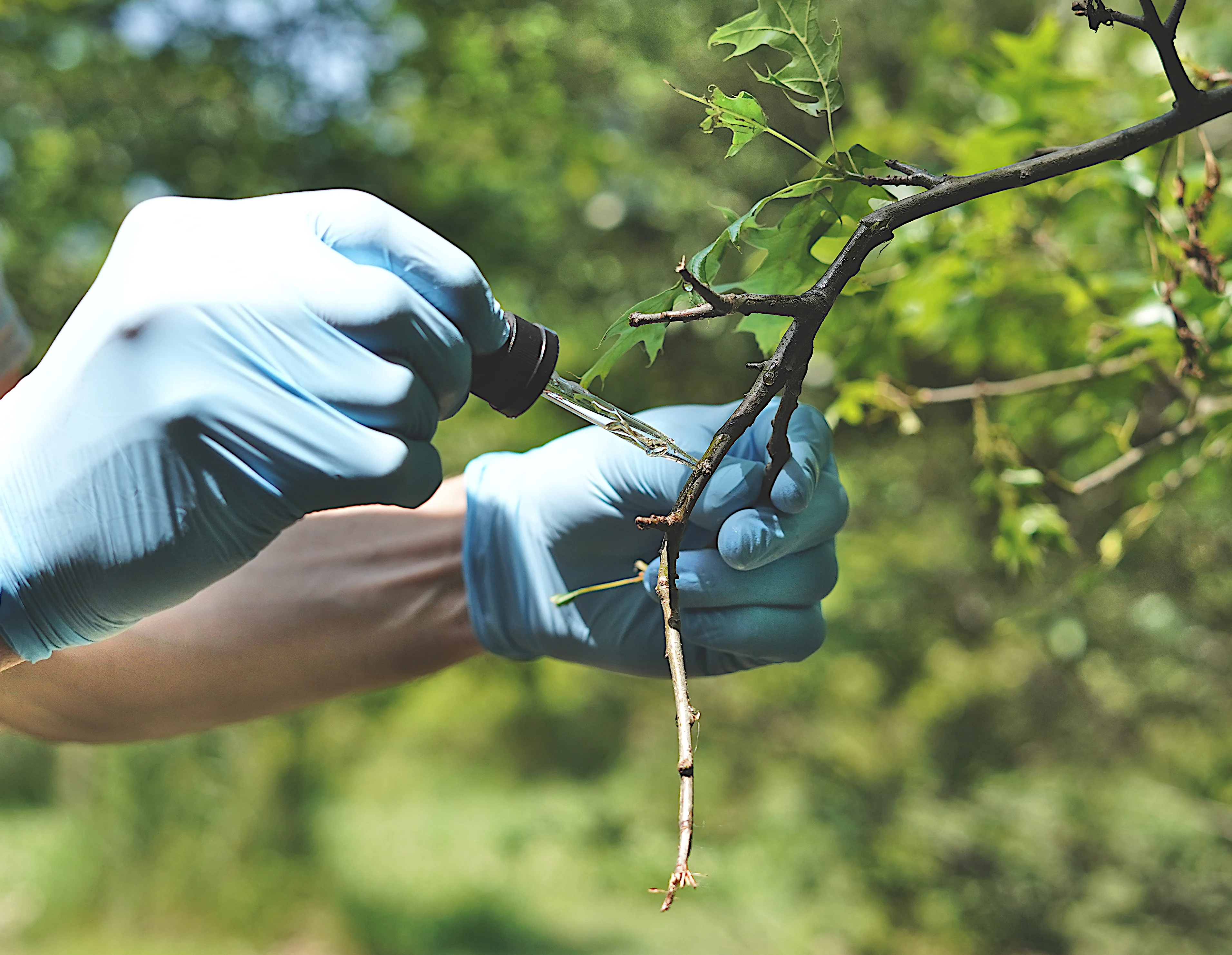
My best results come from mock scrapes that require no refreshing. The goal is to fool the bucks in the area with just one initial “kick start” scrape, and then let it take off with the scent the bucks are leaving. Realism is king to big bucks, and the less you have to manipulate, add scent, or be in the area the better. Ideally they should only be refreshed if they go dormant for a few weeks or don't take, and if bucks don’t respond after two attempts, consider moving on. The reality is not all mock scrapes produce a flurry of activity, so having a wide variety of locations to monitor throughout the summer and fall makes for better hunting opportunities. An established kit you can pull out at any time makes this easier, and following a few best practices will increase the odds a buck will think your scrape is the real deal.
Mock Scrape Tools and Tips
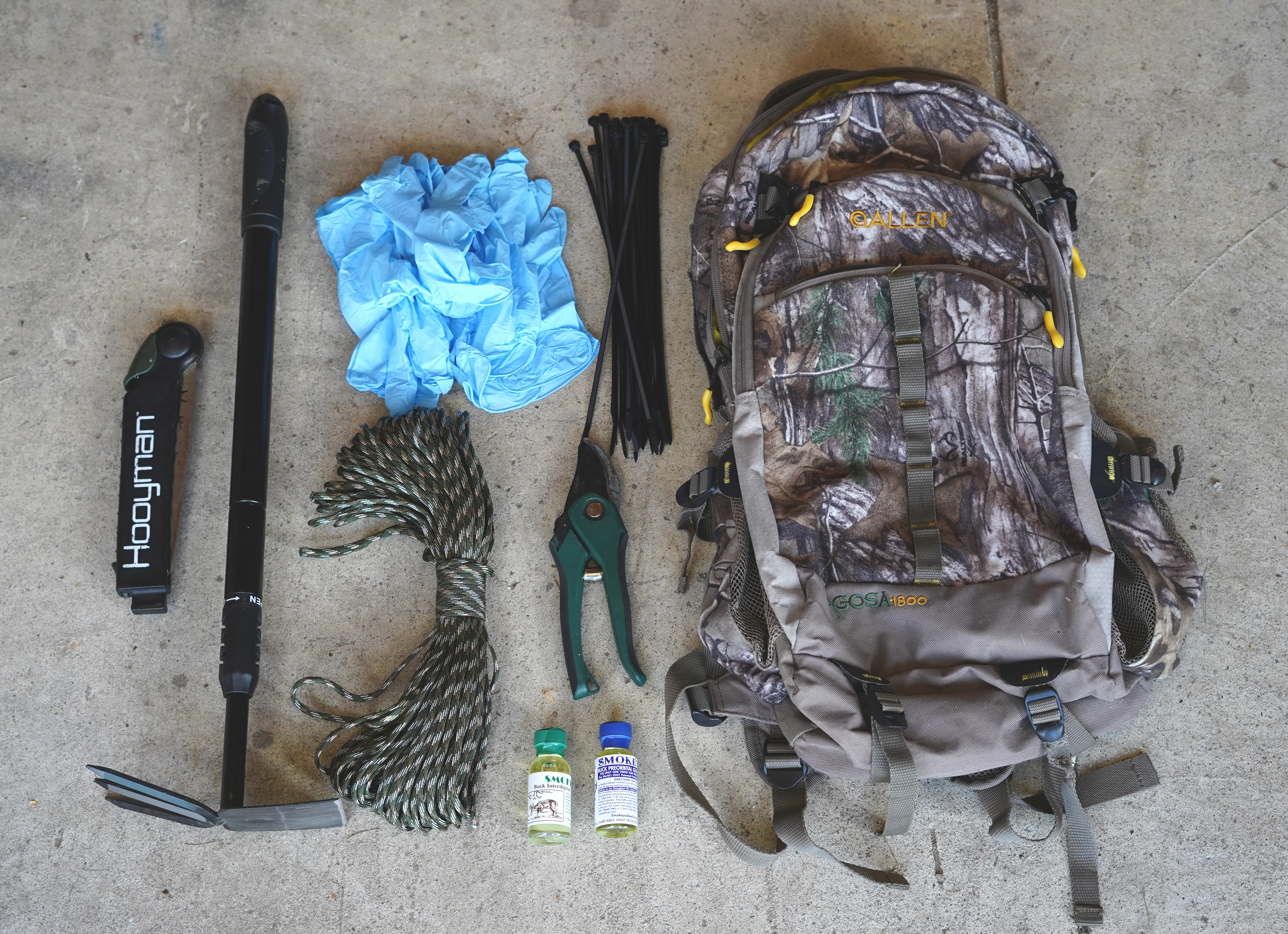
You don't necessarily need special tools to make good mock scrapes, but here's what's in my scrape-making tool kit, all fo which I've found helpful.
Backpack - I assign a backpack used only for this role. To increase chances of mature bucks taking over a scrape, no human trace should be left in the area. For me, this includes washing the backpack to remove any scent, and keeping it in a sealed garbage bag. Everything in the kit stays here.
Rubber Gloves - These keep deer odors and human odors from mixing, and I keep gloves that I use exclusively when preparing scrapes. I make an effort to never touch branches or brush with clothes or skin, especially licking branches.
Small Spade - This just makes preparing the dirt easier compared to, say, using boots. Clear a 3- to 4-foot-diameter area of all debris down to the dirt, and make it big, noticeable, and in a flat area. Deer use their nose, but also eyes for finding scrapes, so put that to work for you and consider adding a fake deer track in the middle to “sell” it even more. I like the Scrap Maker tool from Conquest Scents.
Preorbital and Interdigital Scent - For the scrape itself use interdigital scent, and for the licking branch use preorbital. Since these are different glands on a whitetail, and realism is the goal, it helps to mimic this to adequately fool big whitetails. The licking branch should be waist to chest high and include a broken dangling end of a few inches.
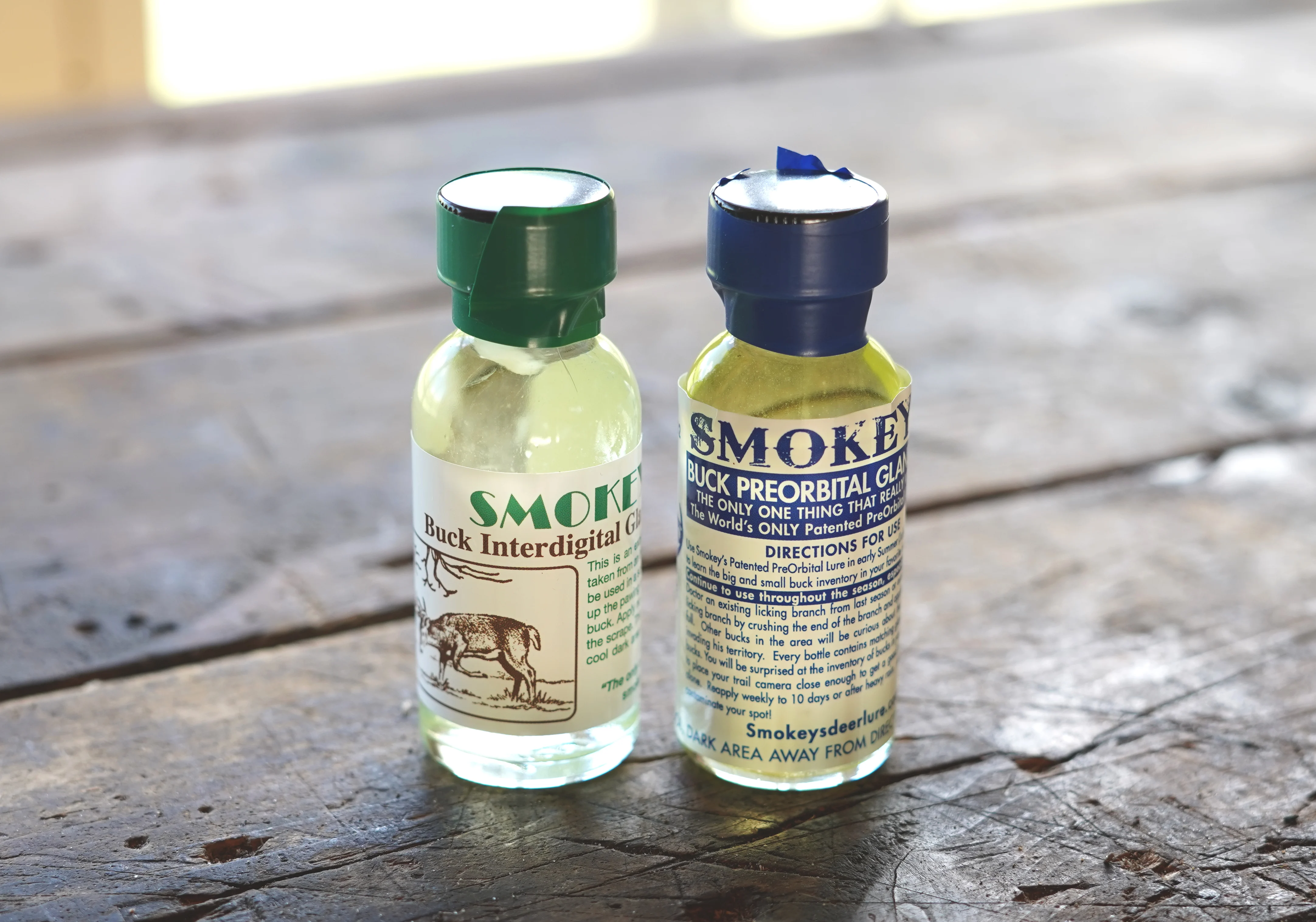
Pruning Shears, Zip Ties, & String - Durable tree species like oak work well for licking branches, and if not present, can be transported to a location. Secure the branch with string or zip ties at the trunk or on an overhanging limb several feet from the licking end. Although vertical vines and ropes have become popular and can work, from my experience they are not hit as aggressively as a horizontal branch. Consider removing nearby competing licking branches to entice deer to only use your strategically placed scrape and to enhance its draw.
Trail Camera, SD Cards, & Batteries - Though not essential, I include a couple reliable cameras, batteries, and SD cards in my kit. You have to weigh the benefits and risks of this; having pictures to tell you the size of bucks hitting your scrape vs. tipping your hand due to poor trail-camera placement or intrusion checking it. That said, if you are confident you can set one up with it being detected, a cell cam will provide valuable information.
Related: Can Bucks Detect Cell Cams?
When to Hunt Your Scrapes
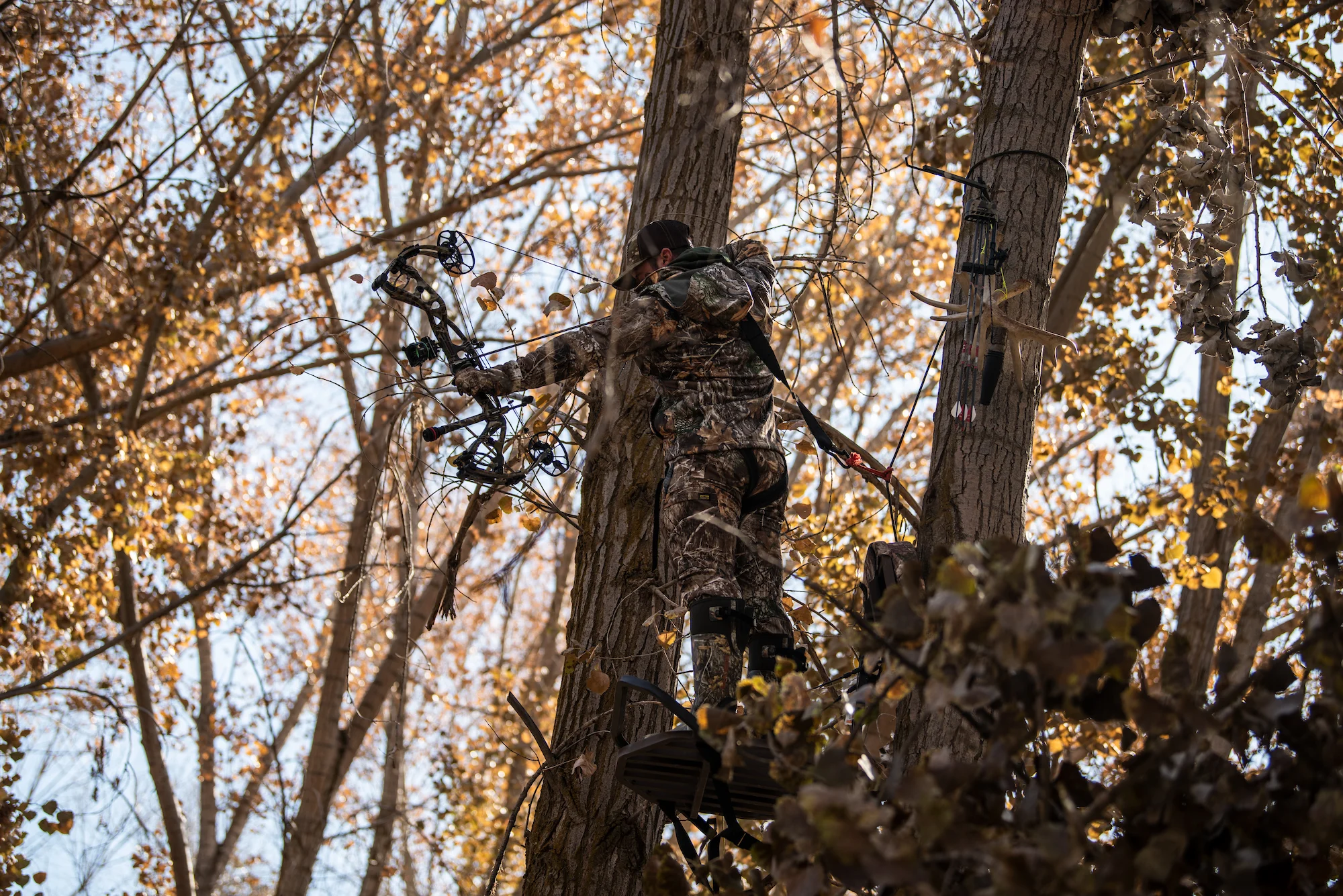
Once your mock scrapes are established, all you have to do is monitor them and let a good buck tell you when it’s the right time to slip in for the kill—that is, when you have proof a buck of the caliber you want to shoot is using it in daylight. This could be any time of season. Cell cameras make this easy without ever intruding, and it's why I often place them in locations I find the best bucks are living.
If using SD-card models that need physical checking, go midday when it's windy or rainy a week or go before the season for your first check. Then make your hunting decisions based on which scrapes show the most consistent daylight activity. Continue to check these every two weeks throughout the year in similar conditions if possible to minimize your presence and get the updated intel you need to drive your hunting decisions. If you don’t use trail cameras, follow the same schedule but just look for the existence of big fresh tracks in the scrape and a good and worn licking branch to tell you it's go time.
The exception to this rule is during the height of pre-rut, when action can be exceptional at any scrape and can really up the odds at a mock scrape you have been closely monitoring since summer. You’ll know the ones to target if you’ve been diligent in this, and may even see activity after peak rut due to bucks searching for the last estrus does and reopening them. And what about the right winds to hunt a scrape? There are some that say you should always stay far back to allow bucks to circle downwind of the scrape but not you, which makes it difficult to predict his exact path or shoot the scrape. I look for different conditions—a wind just off from blowing directly toward the scrape and a buck's likely approach. This adds a feeling of safety for the buck and increases the chance you’ll get to launch an arrow or pull the trigger. He’ll have no reason to be wary. He’s been visiting this spot with no problems since July.


